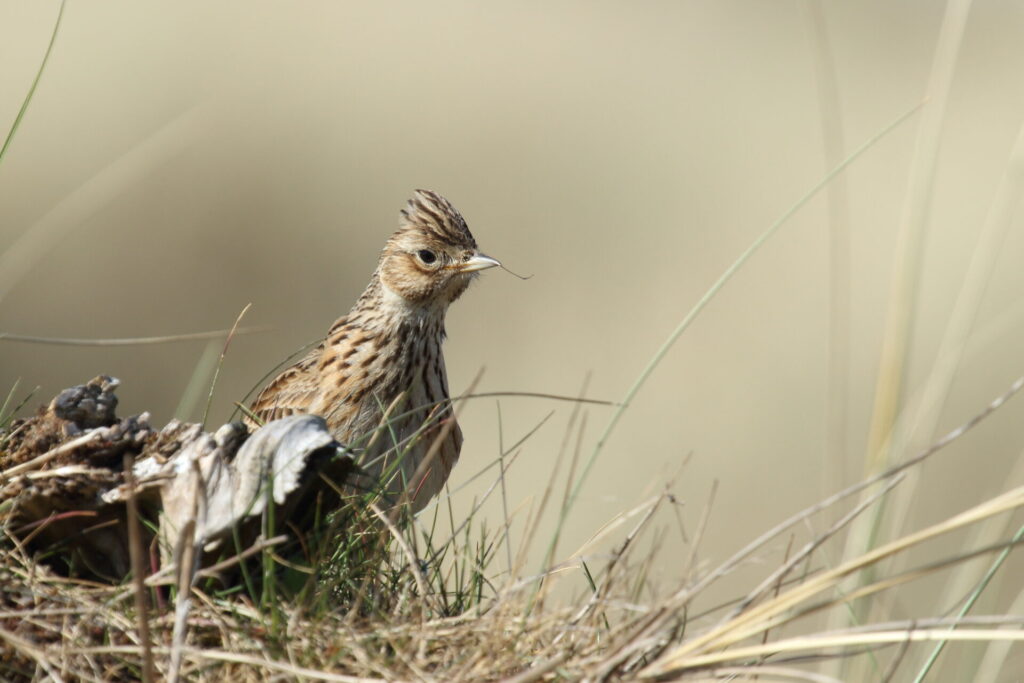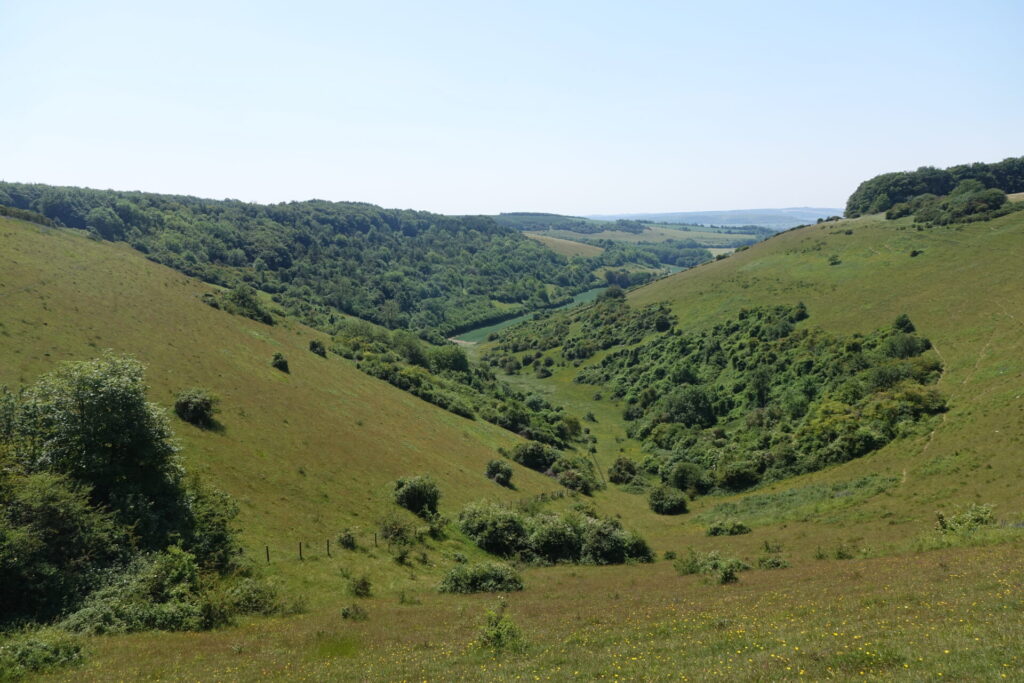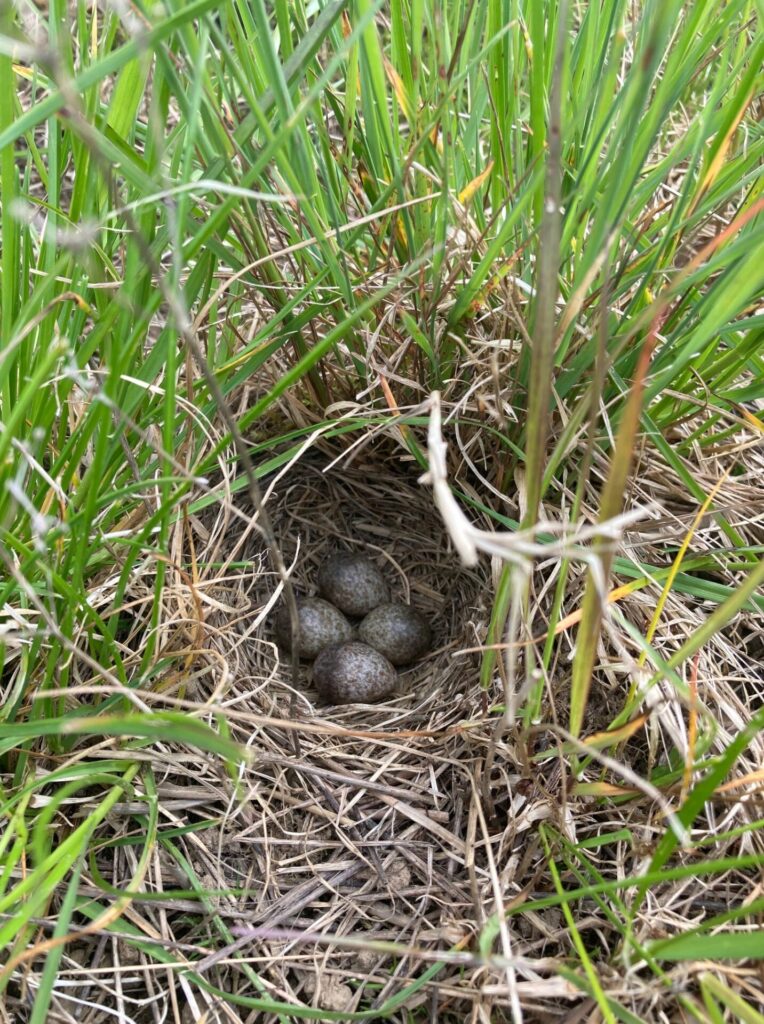Boasting vibrant displays of chalk downland flowers and butterflies, an abundance of birds and mammals and stunning views over the Blackmore Vale, it is easy to see why Fontmell Down attracts nature lovers all year round.

Image: Vaughn Matthews
And quite often, these visitors are joined by their beloved four-legged friends. Walking your dog is a great form of exercise and can help achieve that important dose of nature therapy that we so often neglect.
However, a dog’s naturally inquisitive nature can be extremely harmful to wildlife, particularly our ground-nesting birds.
Many ground-nesting birds, such as nightjar and woodlark, are associated with heathland habitat. However, one particular species takes advantage of the patchwork of grassland and scrub at Fontmell Down: the skylark.
One of the most celebrated birds in literature, poetry and music, the skylark (Alauda arvensis) is a small, streaky brown bird with a crest and long tail. Although its appearance can be described as rather nondescript, the same cannot be said for its unmistakable song-flight. Male skylarks will rise almost vertically from the ground, effortlessly hovering at a great height while singing. These long and complicated song-flights can last for up to an hour, and the birds can reach 300 metres before descending.
In contrast with their impressive aerial displays, skylarks build their small, grassy, cup-shaped nests on the ground. Around three to four eggs are laid, and parents can have up to four broods in a breeding season (between April and August).

Image: Jack Clarke
Building their nests on the ground means that they are at risk of disturbance from trampling feet and excited dogs. When the parents are scared off their nests, the precious eggs and chicks become vulnerable to predators.
And it’s not just skylark nests that can become compromised by walkers and their dogs on Fontmell Down. Meadow pipits, stonechats, corn bunting and yellowhammers all nest on, or close to, the ground. The law states you must keep your dog on a lead no longer than two metres between 1st March and 31st July when on any open access land, in order to protect ground-nesting birds. But Dorset Wildlife Trust urges all visitors to keep their dogs on a short lead and stick to the pathways on the nature reserves all year round to protect wildlife and livestock.
- Visit dorsetwildlifetrust.org.uk to plan your own trip to Fontmell Down and find information on our other nature reserves




